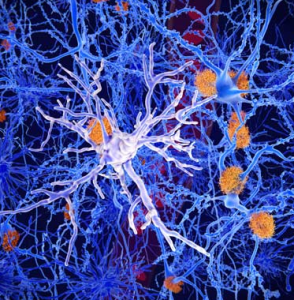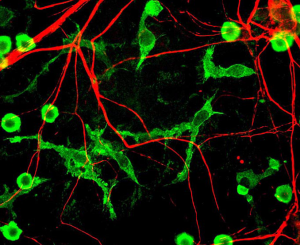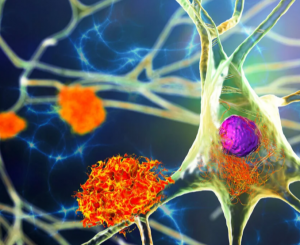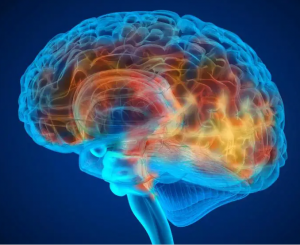NEW PUBLICATION
The New Age of Alzheimer’s
A special report from Scientific American, with a contribution from Prof Craig Ritchie
Published: 2024
Publication summary...
Alzheimer’s disease can rob us of our memories, our independence and our lives, but a global effort is inspiring new hope. With careful reporting and expert-written commentary, this special report explores advances that could delay or even prevent dementia and intriguing new approaches to support brain health in the world’s aging population.
Download link...
DOI: https://www.scientificamerican.com/custom-media/the-new-age-of-alzheimers/
Downloadable PDF: https://bit.ly/3RuS3Dx
NEW PUBLICATION
Reducing Time to Remediate Scale Errors in Neurology Trials
An International Clinical Trials eMagazine, featuring an article co-written by Prof John Harrison (pgs 66-68).
Published: 2024
Publication summary...
Automated quality assurance is helping transform neurology trials, addressing data accuracy and scalability challenges while making way for enhanced treatment insights and streamlined processes.
Download link...
NEW PUBLICATION
Adherence to the Eatwell Guide and cardiometabolic, cognitive and neuroimaging parameters: an analysis from the PREVENT dementia study
Sarah Gregory, Alex Griffiths, Amy Jennings, Fiona C. Malcomson, Jamie Matu, Anne-Marie Minihane, Graciela Muniz-Terrera, Craig W. Ritchie, Solange Parra-Soto, Emma Stevenson, Rebecca Townsend, Nicola Ann Ward, Oliver Shannon
Published: 2024
Publication summary...
This paper reviewed the current evidence on nutrition and dementia prevention, with the aim to provide clinicians with a focused update. Diets that had strong evidence of potential to support dementia prevention efforts included the Mediterranean, MIND and Nordic diets. Interestingly, these are all healthy, plant-based diets. Many public health bodies, including the World Health Organization, already recommend these diets as an important part of dementia prevention efforts. Specific nutrients, such as n=3 fatty acids and B vitamins, may also play a role in dementia prevention with more research needed. Challenges, particularly around good insecurity, need to be tackled to better support patients to make healthy dietary choices.
NEW PUBLICATION
Methods for Neuroscience Drug Development: Guidance on Standardization of the Process for Defining Clinical Outcome Strategies in Clinical Trials
Silvia Zaragoza Domingo, Jordi Alonso, Montse Ferrer, Maria T. Acosta, Larry Alphs, Peter Annas, Pavel Balabanov, Anna-Karin Berger, Kim I. Bishop, Florence Butlen-Ducuing, Georg Dorffner, Chris Edgar, Manuel de Gracia Blanco, Brian Harel, John Harrison,William P. Horan, Judith Jaeger, Jan Kottner, Amy Pinkham, Daniella Tinoco,
Monika Vance, Christian Yavorsky
Published: 2024
Publication summary...
Neurosciences clinical trials lack good standards for designing outcome strategies. This article describes the first published guidance on the standardization of the process for clinical outcomes in neuroscience. Our approach focused on providing guidance regarding content validity (i.e. making sure all relevant issues are covered), patient-centricity, validity requirements and considerations for regulatory acceptance.
Download link...
NEW PUBLICATION
“Time Saved” Calculations to Improve Decision-Making in Progressive Disease Studies
S.P. Dickson, B. Haaland, C.H. Mallinckrodt, B. Dubois, P. O’Keefe, M. Morgan, O. Peters, A. Fernández Santana III , J. Harrison, A. Schneeberger, S. Hendrix
Published: 2024
Publication summary...
Disease modifying therapies (DMTs) are most beneficial in early disease, when progression is slow and changes small, with clinical relevance difficult to interpret. Time component tests (TCTs) translate differences between treatments across endpoints in a global TCT, for example using the ADAS-Cog and ADCS-ADL. Using this approach, we reanalysed data from a past trial which yielded a time savings of 11 months in an 18-month study. The relevance of 11 months saved is better understood than a mean difference of 3.8 points in the composite outcome.
Download link...
Transmembrane protein 97 is a potential synaptic amyloid beta receptor in human Alzheimer’s disease
Martí Colom-Cadena, Jamie Toombs, Elizabeth Simzer, Kristjan Holt, Robert McGeachan, Jane Tulloch, Rosemary J. Jackson, James H. Catterson, Maxwell P. Spires-Jones, Jamie Rose, Lora Waybright, Anthony O. Caggiano, Declan King, Francesco Gobbo, Caitlin Davies, Monique Hooley, Sophie Dunnett, Robert Tempelaar, Soraya Meftah, Makis Tzioras, Mary E. Hamby, Nicholas J. Izzo, Susan M. Catalano, Claire S. Durrant, Colin Smith, Owen Dando & Tara L. Spires-Jones
Published: 2024
Publication summary...
Synapse loss correlates with cognitive decline in Alzheimer’s disease, and soluble oligomeric amyloid beta (Aβ) is implicated in synaptic dysfunction and loss. An important knowledge gap is the lack of understanding of how Aβ leads to synapse degeneration. In particular, there has been difficulty in determining whether there is a synaptic receptor that binds Aβ and mediates toxicity. While many candidates have been observed in model systems, their relevance to human AD brain remains unknown. This is in part due to methodological limitations preventing visualization of Aβ binding at individual synapses. To overcome this limitation, we combined two high resolution microscopy techniques: array tomography and Förster resonance energy transfer (FRET) to image over 1 million individual synaptic terminals in temporal cortex from AD (n = 11) and control cases (n = 9). Within presynapses and post-synaptic densities, oligomeric Aβ generates a FRET signal with transmembrane protein 97. Further, Aβ generates a FRET signal with cellular prion protein, and post-synaptic density 95 within post synapses. Transmembrane protein 97 is also present in a higher proportion of post synapses in Alzheimer’s brain compared to controls. We inhibited Aβ/transmembrane protein 97 interaction in a mouse model of amyloidopathy by treating with the allosteric modulator CT1812. CT1812 drug concentration correlated negatively with synaptic FRET signal between transmembrane protein 97 and Aβ. In human-induced pluripotent stem cell derived neurons, transmembrane protein 97 is present in synapses and colocalizes with Aβ when neurons are challenged with human Alzheimer’s brain homogenate. Transcriptional changes are induced by Aβ including changes in genes involved in neurodegeneration and neuroinflammation. CT1812 treatment of these neurons caused changes in gene sets involved in synaptic function. These data support a role for transmembrane protein 97 in the synaptic binding of Aβ in human Alzheimer’s disease brain where it may mediate synaptotoxicity.
Download links...
Cognitive and Functional Change Over Time in Cognitively Healthy Individuals According to Alzheimer Disease Biomarker-Defined Subgroups
Mark A. Dubbelman, PhD; Heleen M.A. Hendriksen, MSc; John E. Harrison, PhD; Everard G.B. Vijverberg, MD, PhD; Niels D. Prins, MD, PhD; Lior A. Kroeze, MS; Lois Ottenhoff, MS; Mardou M.S.S.A. Van Leeuwenstijn; Inge M.W. Verberk, PhD; Charlotte E. Teunissen, PhD; Elsmarieke M. van de Giessen, MD; Argonde C. Van Harten, MD, PhD; Wiesje M. Van Der Flier, PhD; and Sietske A.M. Sikkes, PhD
Published: 2023
Publication summary...
A major challenge for the feasibility and cost effectiveness of clinical trials on patients with preclinical AD is the fact that cognitive and functional decline over time is mild. A way forward is to incorporate better key outcome measures more sensitive to decline over time in cognitively unimpaired participants. To this point, significant advances in digital assessments hold great promise. Advantages include the potential to reduce error and increase reliability over repeated assessments and the ability to target more specific and relevant cognitive processes and measure response time with precision.
Download link...
Cystatin F (Cst7) drives sex-dependent changes in microglia in an amyloid-driven model of Alzheimer’s disease
Michael JD Daniels, Lucas Lefevre, Stefan Szymkowiak, Alice Drake, Laura McCulloch, Makis Tzioras, Jack Barrington, Owen R Dando, Xin He, Mehreen Mohammad, Hiroki Sasaguri, Takashi Saito, Takaomi C Saido, Tara Spires-Jones, Barry McColl
Published: 2023
Publication summary...
Microglial endolysosomal (dys)function is strongly implicated in neurodegenerative disease. Transcriptomic studies show that a microglial state characterised by a set of genes involved in endolysosomal function is induced in both mouse Alzheimer’s disease (AD) models and human AD brain, and that the emergence of this state is emphasised in females. Cst7 (encoding cystatin F) is among the most highly upregulated genes in these microglia. However, despite such striking and robust upregulation, the function of Cst7 in neurodegenerative disease is not understood. Here, we crossed Cst7-/- mice with the AppNL-G-F mouse to test the role of Cst7 in a model of amyloid-driven AD. Surprisingly, we found that Cst7 plays a sexually dimorphic role regulating microglia in this model. In females, Cst7-/-AppNL-G-F microglia had greater endolysosomal gene expression, lysosomal burden, and amyloid beta (Aβ) burden in vivo and were more phagocytic in vitro. However, in males, Cst7-/-AppNL-G-F microglia were less inflammatory and had a reduction in lysosomal burden but had no change in Aβ burden. Overall, our study reveals functional roles for one of the most commonly upregulated genes in microglia across disease models, and the sex-specific profiles of Cst7-/–altered microglial disease phenotypes. More broadly, the findings raise important implications for AD including crucial questions on sexual dimorphism in neurodegenerative disease and the interplay between endolysosomal and inflammatory pathways in AD pathology.
Download link...
Remote data collection speech analysis in people at risk for Alzheimer’s disease dementia: usability and acceptability results
Sarah Gregory, John Harrison, Janna Herrmann, Matthew Hunter, Natalie Jenkins, Alexandra König, Nicklas Linz, Saturnino Luz, Elisa Mallick, Hannah Pullen, Miles Welstead, Stephen Ruhmel, Johannes Tröger, Craig W. Ritchie
Published: 2023
Publication summary...
Digital cognitive assessments are gathering importance for the decentralized remote clinical trials of the future. Before including such assessments in clinical trials, they must be tested to confirm feasibility and acceptability with the intended participant group. This study presents usability and acceptability data from the Speech on the Phone Assessment (SPeAk) study. The results from this usability and acceptability analysis suggest that completing this brief battery of cognitive tests via a telephone call is both acceptable and feasible in a midlife-to-older adult population in the United Kingdom, living at risk for Alzheimer’s disease.
Download link...
Human astrocytes and microglia show augmented ingestion of synapses in Alzheimer’s disease via MFG-E8
Makis Tzioras, Michael J.D. Daniels, Caitlin Davies, Paul Baxter, Declan King, Sean McKay, Balazs Varga, Karla Popovic, Madison Hernandez, Anna J. Stevenson, Jack Barrington, Elizabeth Drinkwater, Julia Borella, Rebecca K. Holloway, Jane Tulloch, Jonathan Moss, Clare Latta, Jothy Kandasamy, Drahoslav Sokol, Colin Smith, Veronique E. Miron, Ragnhildur Thóra Káradóttir, Giles E. Hardingham, Christopher M. Henstridge, Paul M. Brennan, Barry W. McColl, Tara L. Spires-Jones
Published: 2023
Publication summary...
Synapse loss correlates with cognitive decline in Alzheimer’s disease (AD). Data from mouse models suggests microglia are important for synapse degeneration, but direct human evidence for any glial involvement in synapse removal in human AD remains to be established. Here we observe astrocytes and microglia from human brains contain greater amounts of synaptic protein in AD compared with non-disease controls, and that proximity to amyloid-β plaques and the APOE4 risk gene exacerbate this effect. In culture, mouse and human astrocytes and primary mouse and human microglia phagocytose AD patient-derived synapses more than synapses from controls. Inhibiting interactions of MFG-E8 rescues the elevated engulfment of AD synapses by astrocytes and microglia without affecting control synapse uptake. Thus, AD promotes increased synapse ingestion by human glial cells at least in part via an MFG-E8 opsonophagocytic mechanism with potential for targeted therapeutic manipulation.
Download link...
Practical pathway for the management of depression in the workplace: a Canadian perspective
Chokka P, Bender A, Brennan S, Ahmed G, Corbière M, Dozois DJA, Habert J, Harrison J, Katzman MA, McIntyre RS, Liu YS, Nieuwenhuijsen K and Dewa CS
Published: 2023
Publication summary...
Major depressive disorder (MDD) and other mental health issues pose a substantial burden on the workforce. Approximately half a million Canadians will not be at work in any week because of a mental health disorder, and more than twice that number will work at a reduced level of productivity (presenteeism). Although it is important to determine whether work plays a role in a mental health condition, at initial presentation, patients should be diagnosed and treated per appropriate clinical guidelines. However, it is also important for patient care to determine the various causes or triggers including work-related factors. Clearly identifying the stressors associated with the mental health disorder can help clinicians to assess functional limitations, develop an appropriate care plan, and interact more effectively with worker’s compensation and disability programs, as well as employers. There is currently no widely accepted tool to definitively identify MDD as work-related, but the presence of certain patient and work characteristics may help. This paper seeks to review the evidence specific to depression in the workplace, and provide practical tips to help clinicians to identify and treat work- related MDD, as well as navigate disability issues.
Download link...
What’s in a Score: A Longitudinal Investigation of Scores Based on Item Response Theory and Classical Test Theory for the Amsterdam Instrumental Activities of Daily Living Questionnaire in Cognitively Normal and Impaired Older Adults.
Dubbelman, M. A., Postema, M. C., Jutten, R. J., Harrison, J. E., Ritchie, C. W., Aleman, A., de Jong, F. J., Schalet, B. D., Terwee, C. B., van der Flier, W. M., Scheltens, P., & Sikkes, S. A. M.
Published: 2023
Publication summary...
Real world relevance is a key issue with respect to treatment efficacy. Many of the traditional scales fail to index key activities of daily living, such as emailing, internet purchasing, online banking, etc. The Amsterdam iADL was developed to remedy these failings. In this study we have sought to establish which of two scoring methods better captured change over time.
Objective: We aimed to investigate whether item response theory (IRT)-based scoring allows for a more accurate, responsive, and less biased assessment of everyday functioning than traditional classical test theory (CTT)-based scoring, as measured with the Amsterdam Instrumental Activities of Daily Living Questionnaire. Method: In this longitudinal multicenter study including cognitively normal and impaired individuals, we examined IRT-based and CTT-based score distributions and differences between diagnostic groups using linear regressions, and investigated scale attenuation. We compared change over time between scoring methods using linear mixed models with random intercepts and slopes for time. Results: Two thousand two hundred ninety-four participants were included (66.6 ± 7.7 years, 54% female): n = 2,032 (89%) with normal cognition, n = 93 (4%) with subjective cognitive decline, n = 79 (3%) with mild cognitive impairment, and n = 91 (4%) with dementia. At baseline, IRT-based and CTT-based scores were highly correlated (r = −0.92). IRT-based scores showed less scale attenuation than CTT-based scores. In a subsample of n = 1,145 (62%) who were followed for a mean of 1.3 (SD = 0.6) years, IRT-based scores declined significantly among cognitively normal individuals (unstandardized coefficient [B] = −0.15, 95% confidence interval, 95% CI [−0.28, −0.03], effect size = −0.02), whereas CTT-based scores did not (B = 0.20, 95% CI [−0.02, 0.41], effect size = 0.02). In the other diagnostic groups, effect sizes of change over time were similar. Conclusions: IRT-based scores were less affected by scale attenuation than CTT-based scores. With regard to responsiveness, IRT-based scores showed more signal than CTT-based scores in early disease stages, highlighting the IRT-based scores’ superior suitability for use in preclinical populations.
Download links...
Genetic risk factors of Alzheimer’s Disease disrupt resting‑state functional connectivity in cognitively intact young individuals
Ludmila Kucikova1,2 · Jianmin Zeng3 · Carlos Muñoz‑Neira1,4 · Graciela Muniz‑Terrera5,6 · Weijie Huang1,2,7 · Sarah Gregory5 · Craig Ritchie5,8 · John O’Brien4 · Li Su1,2,4
Published: 26 June, 2023
Publication summary...
Past evidence shows that changes in functional brain connectivity in multiple resting-state networks occur in cognitively healthy individuals who have non-modifiable risk factors for Alzheimer’s Disease. Here, we aimed to investigate how those changes differ in early adulthood and how they might relate to cognition.
We investigated the effects of genetic risk factors of AD, namely APOEe4 and MAPTA alleles, on resting-state functional connectivity in a cohort of 129 cognitively intact young adults (aged 17–22 years). We used Independent Component Analysis to identify networks of interest, and Gaussian Random Field Theory to compare connectivity between groups. Seed-based analysis was used to quantify inter-regional connectivity strength from the clusters that exhibited significant between-group differences. To investigate the relationship with cognition, we correlated the connectivity and the performance on the Stroop task.
The analysis revealed a decrease in functional connectivity in the Default Mode Network (DMN) in both APOEe4 carriers and MAPTA carriers in comparison with non-carriers. APOEe4 carriers showed decreased connectivity in the right angular gyrus (size = 246, p-FDR = 0.0079), which was correlated with poorer performance on the Stroop task. MAPTA carriers showed decreased connectivity in the left middle temporal gyrus (size = 546, p-FDR = 0.0001). In addition, we found that only MAPTA carriers had a decreased connectivity between the DMN and multiple other brain regions.
Download link...
Other Publications
Apart from the key publications listed here, you can also find a catalogue of other publications from our Scottish Brain Sciences colleagues:















